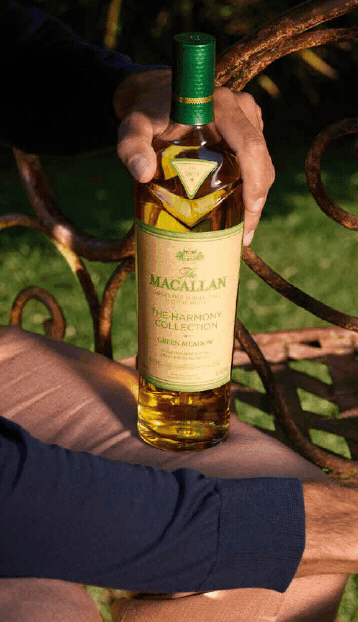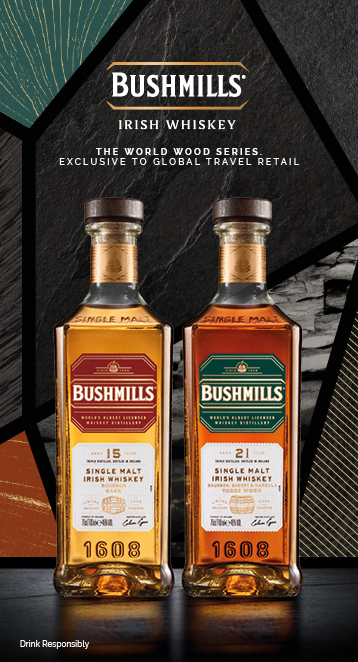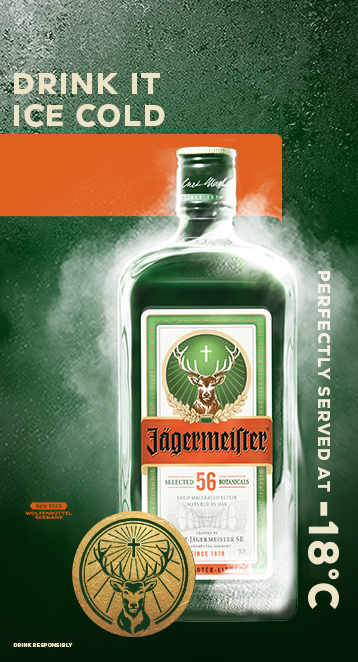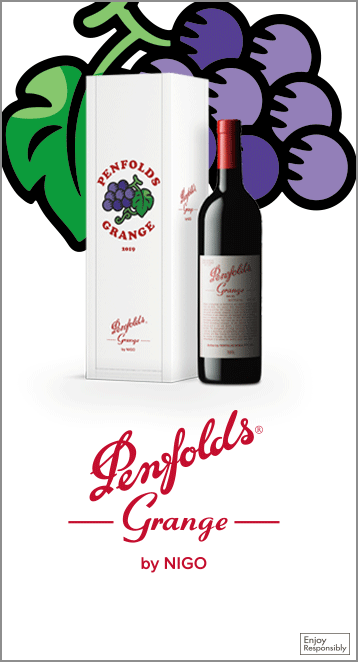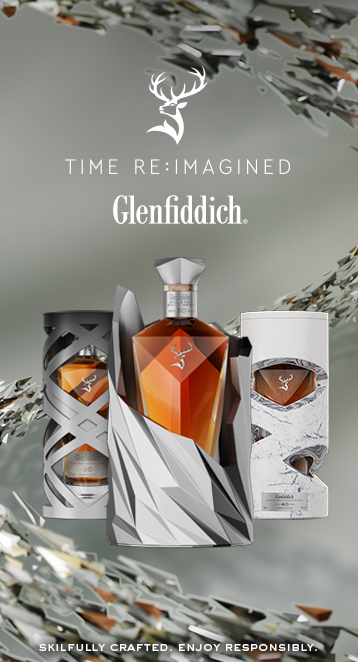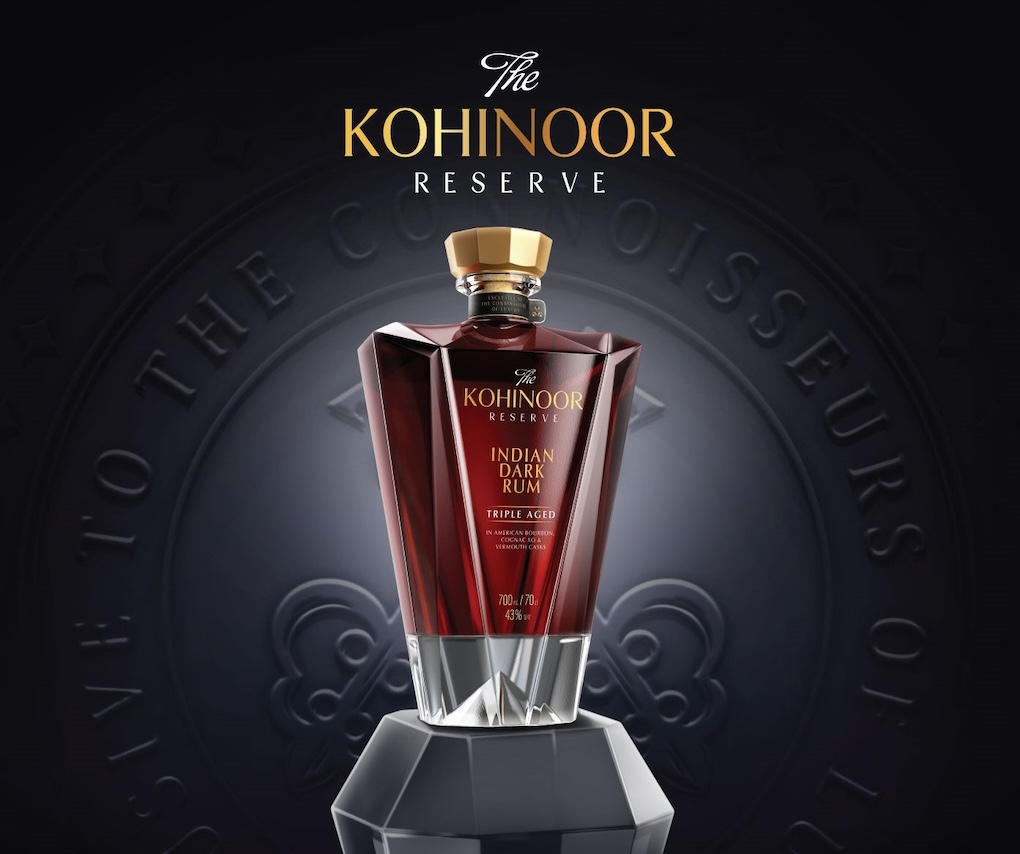Orange peel liqueur Cointreau was a key ingredient in the very first margarita, mixed, as legend has it, by American socialite Margaret Sames at one of her parties in 1948. Margaret’s first name, translated into Spanish, gave the now famed cocktail – a staple of bar menus around the world – its name.
This year, Cointreau is marking the 70th anniversary of the Margarita with a wide-ranging campaign that involves pop-up bars, events, competitions and tastings.
Travel retail is playing a key role, with activations around the ‘Margarita loves Cointreau’ theme. One of the biggest in European travel retail is taking place this month at London Gatwick Airport, in partnership with Dufry/World Duty Free. There, Cointreau has taken over the main in-store bar to underline its credentials as a cocktail ingredient and show its creative side through a series of margarita expressions. Travellers are invited to sample different uses of the liqueur and explore the Cointreau world at one of the most striking bars – with a theme styled on an Acapulco pool party – that you’ll find anywhere in European travel retail this summer.
The Gatwick campaign began this week with a memorable twist, with the presence of Brand Heritage Manager Alfred Cointreau. Born and raised in the Angers, home of the brand created by Edouard Cointreau, Alfred is a member of the sixth generation of the family – and the only one of his generation with an active role in the company today (though he hopes his two young daughters might represent the seventh generation in time).
As an ambassador for the brand, travel is in his blood – to the point where he has even written a book (Night Time Walks) about his unexpected experiences and memorable encounters with people and places around the world.
Alfred Cointreau spoke to Dermot Davitt at the Gatwick event to talk about traditions, family ties and travel retail.
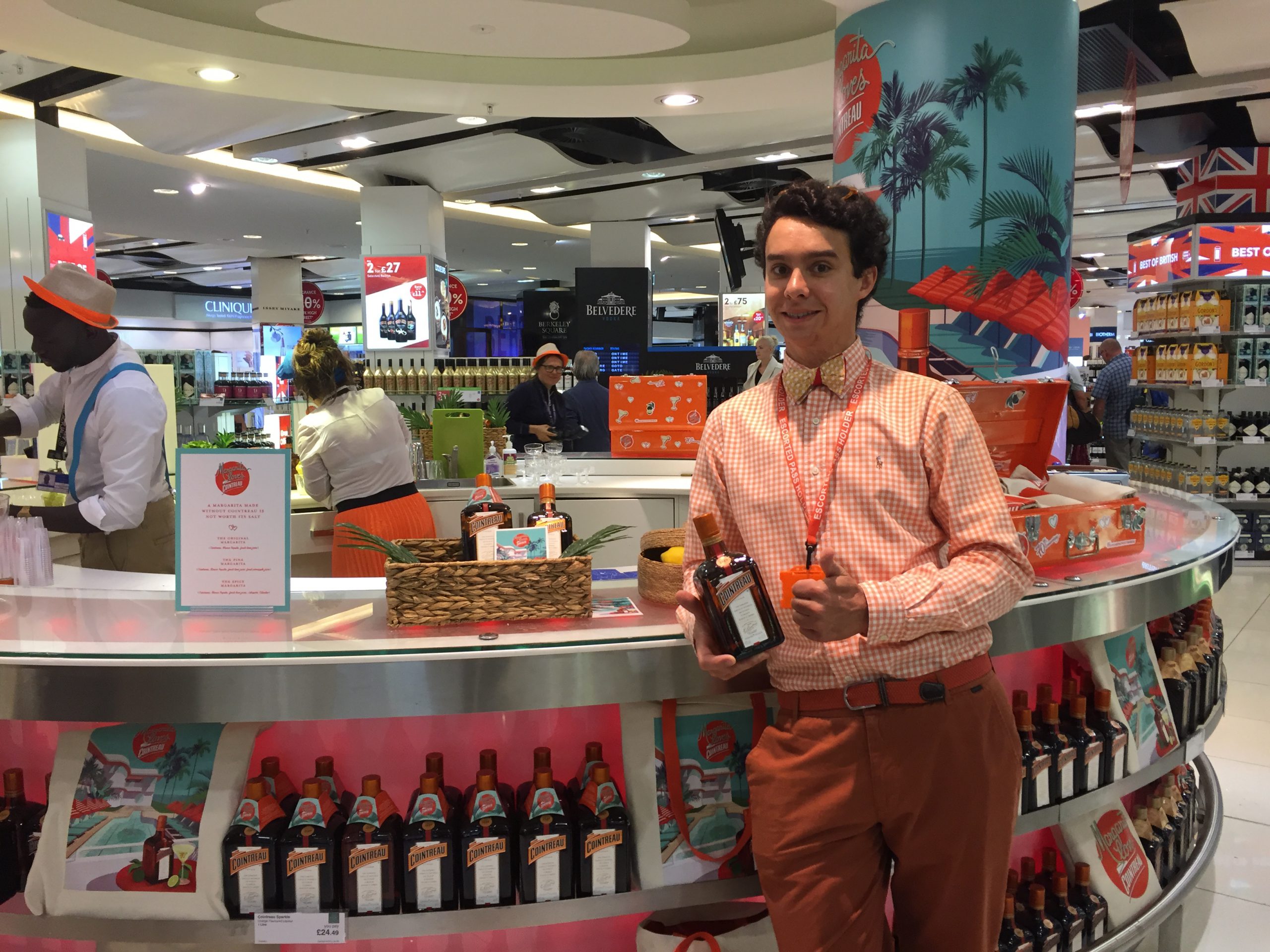
The Moodie Davitt Report: Alfred, you have spent today telling the Cointreau story to consumers at Gatwick Airport. What role does duty free play in building awareness and sales of the brand?
Alfred Cointreau: Duty free is very important for us. It’s the second biggest market in terms of size of business for Cointreau, after the USA. It offers us a ‘window on the world’. It’s vital that our clients can see the bottle when they travel and stay connected to us. To be in duty free and to do a specific promotion like today is really important and for me personally it’s very interesting to be here.
There’s a historical perspective too. Cointreau was one of the first brands, late in the 19th century through my great-great-grandfather, to have an international vision. This was quite new at the time. And still today around the neck of the bottle we write the slogan ‘Cointreau aux quatre coins de monde’, which means ‘to the four corners of the world’.
“We are making connections at many airports, and that underlines our international vision”
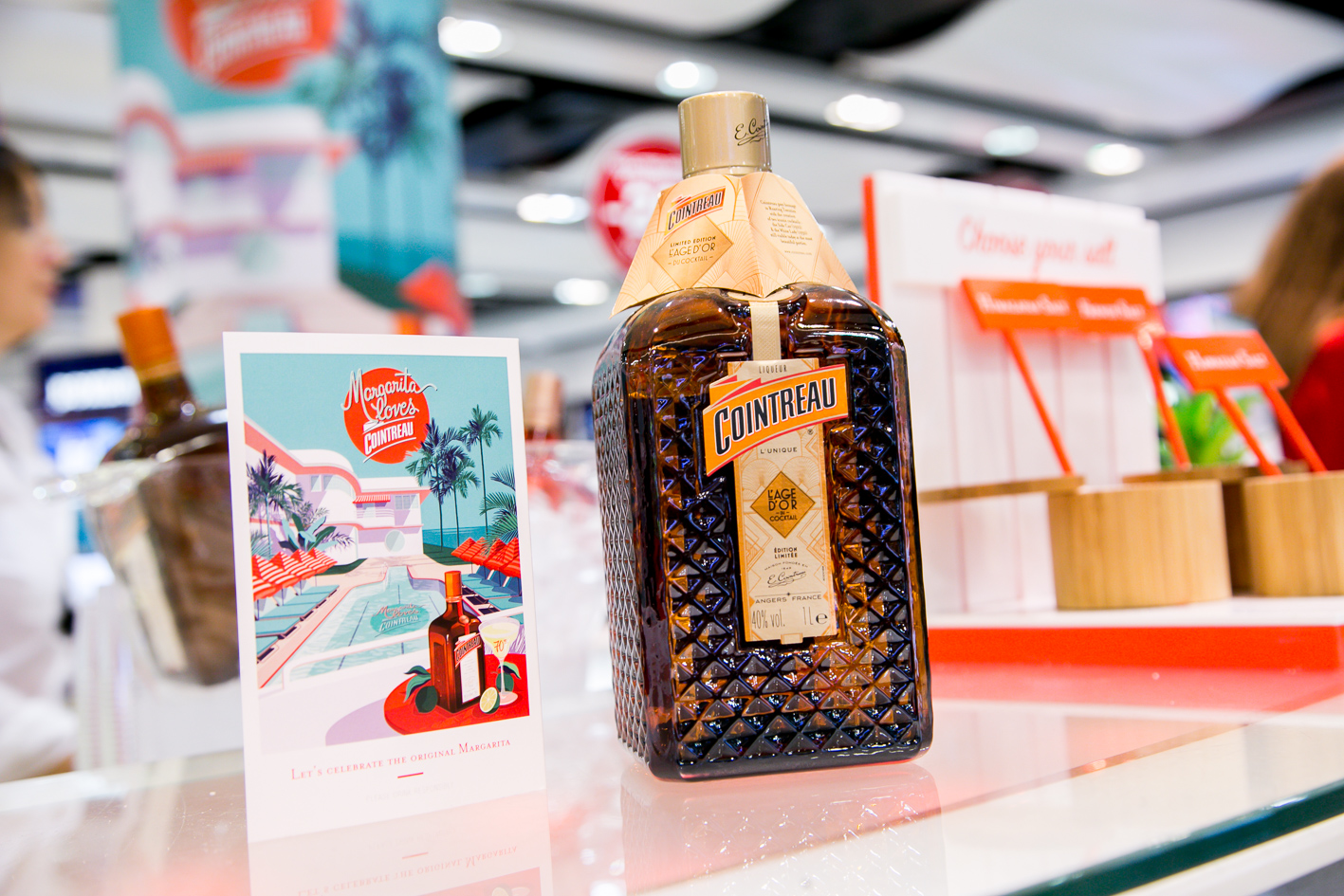
What can the airport environment offer your brand that other channels can not?
Travel retail must offer an experience. The bar here at Gatwick Airport has a lovely set-up with colours, fun, theatre and education. Our aim is to show just how versatile Cointreau can be, whether as a mixer in a drink or an ingredient in cooking. I met a woman today who until now has only used Cointreau in her kitchen. But from today, after we spoke, I hope she sees the association with the cocktail. So we can add pleasure, provide a new experience, and it’s important to share that with people. The airport offers this opportunity to connect.
In duty free it’s not only about adding your product to the shelf; you can provide information on what to drink and how to drink. Sure, you can find all of this out on the Internet but having human contact is more important than ever in the 21st century. The spirits industry is also all about the human connection, whether it’s meeting the master distiller, the bartender, the salesperson. We are making these connections at many airports, and that underlines our international vision.
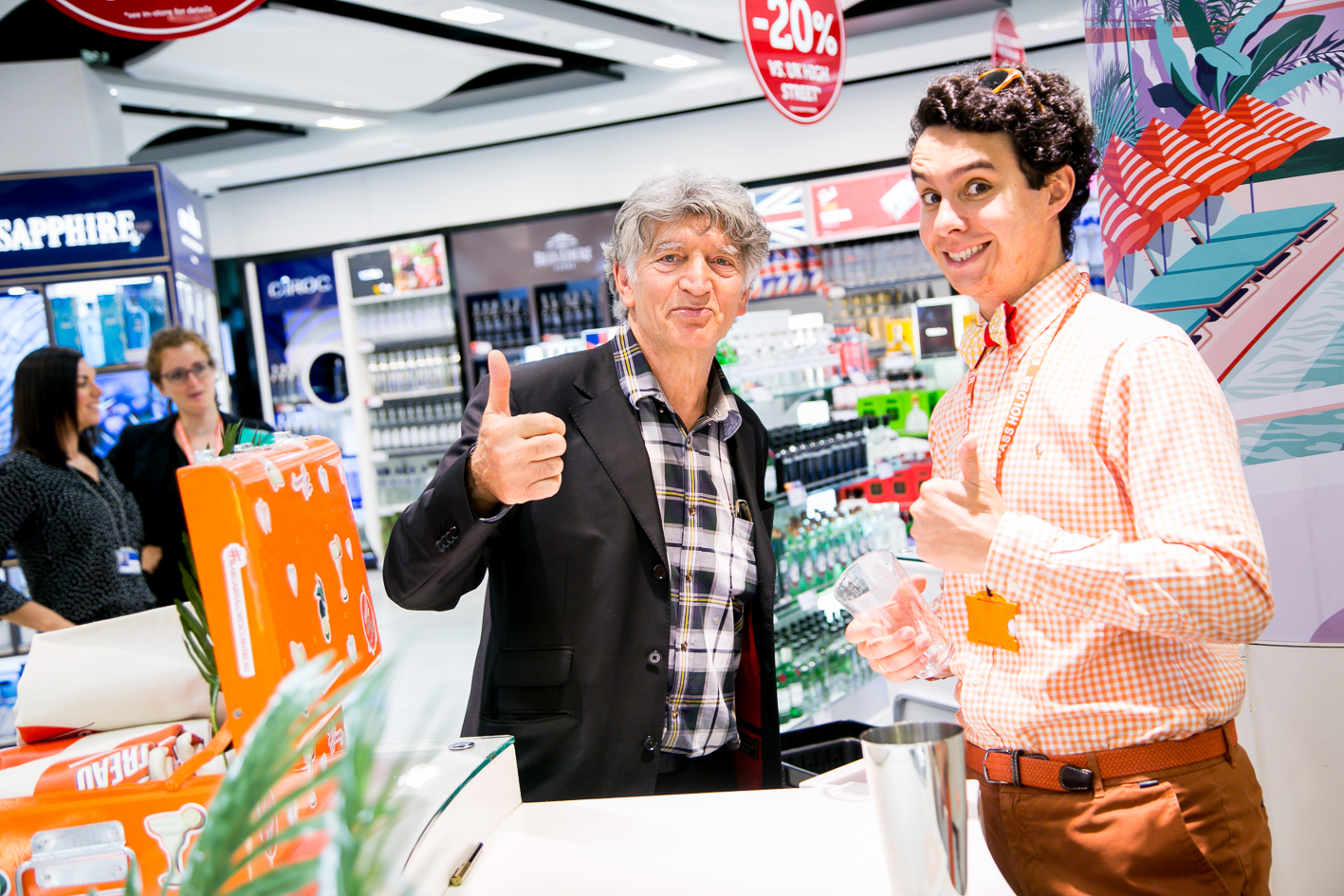
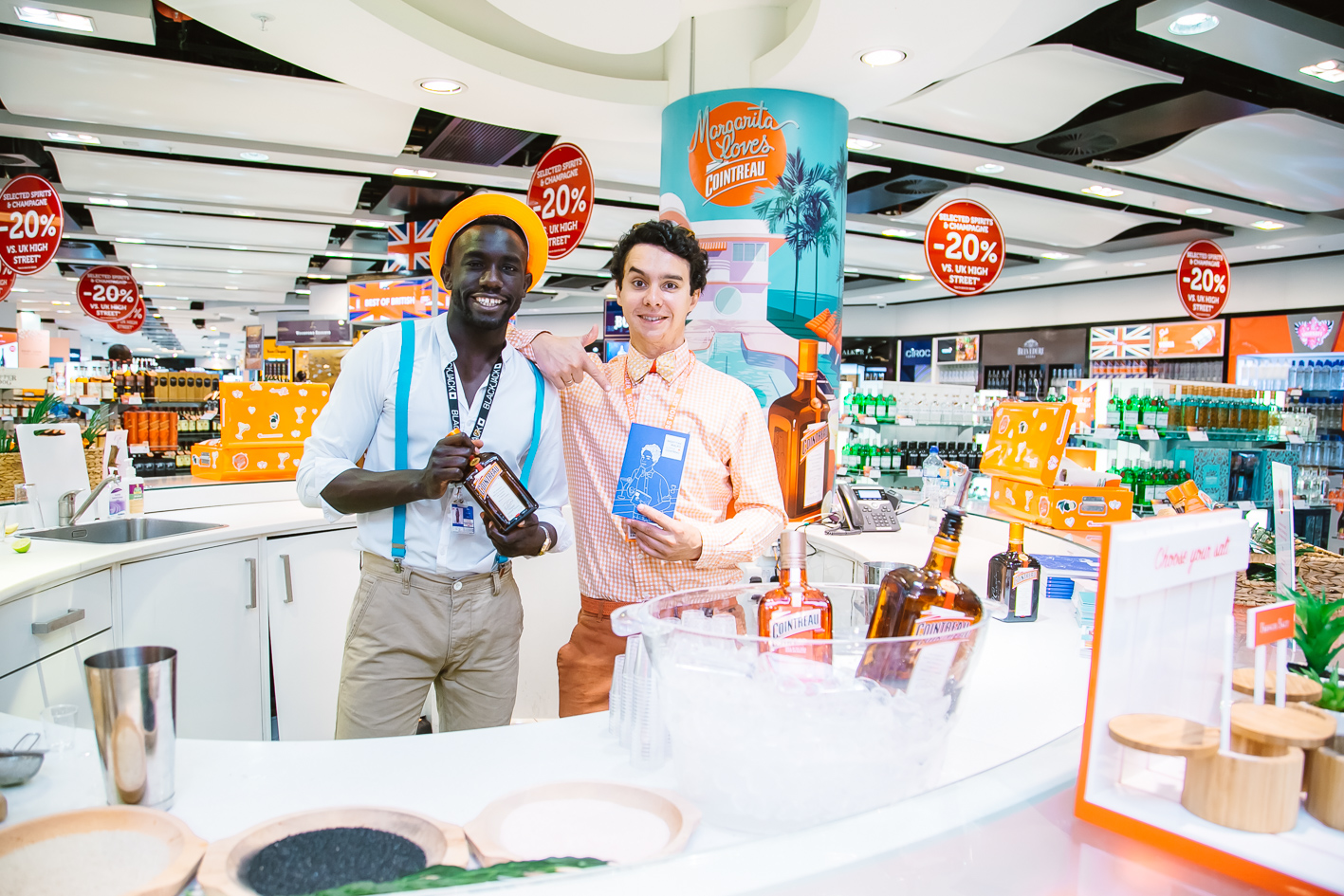
Tell us about the Cointreau connection to the Margarita, which you are marking this year.
Since Cointreau was created it has become a feature of over 300 cocktails and perhaps the most iconic of these is the Margarita. It was created in 1948 by [Dallas socialite] Margaret Sames with her favourite drinks, Cointreau and tequila, for a special party.
We wanted to mark that anniversary; you can use any tequila you like but you have to use Cointreau to properly give it the name Margarita. It’s an exotic drink, evoking holidays and sunny beaches. To reinforce those messages in an airport makes sense to many people. It offers an association with pleasure and the world of travel.
We are marking this occasion through the year. We have client events, pop-up bars, competitions and other showcases, including in duty free. We play on three different angles here: the clients, the bartenders and the travellers.
As the sixth generation of the family, what responsibility do you feel to the Cointreau heritage? As a young man, does this weigh heavily on you?
We say in the family: you join only if you want to join. It’s a personal choice. I decided in 2010 that I would, because I have a passion for this business and I felt the connection with the brand strongly.
Before I took this step, some people (including from the family) said to me, “we expect so much from you, this will be a weight on your shoulders”. So no pressure!
I started in year one working in the distillery, and I also spent time working in a bar in Paris. What I found was that the people I met didn’t say “ah, you are here only because you are sixth generation.” What they said was “we are really happy to share what we do, we think it’s great you are interested”. They were just happy to see new blood coming in. The pressure disappeared for me at once. Within the business people are delighted to meet someone from the family who wants to be a part of what they do.
I am of the sixth generation and want to see Cointreau thrive; to have my name on it makes me proud.

And what is your role today?
I wear several different hats. Part of my job is to pass on the international vision, especially to our bartenders and distributors. I remind them what Cointreau is, what our values and our qualities are. Cointreau is in almost every bar, but sometimes it’s at the back, sitting on a shelf. One of my ambitions is to make Cointreau a fixture on the ‘speed racks’ close to the legs of the bartender for use very often. So that means reinforcing the message that you can be creative.
The other part of my job is to be at the distillery working with communications and marketing, and to welcome our clients there. Even if I can give you a great master class in a shop, the best way to understand it is to visit the site and meet the master distiller (Carole Quinton).

How do you maintain the traditional values of the brand while embracing the future? Do many younger consumers think of Cointreau as trendy, or is that battle still to be won?
The family connection helps to maintain the authenticity of the brand. The recipe and the bottle design has never changed since the beginning. But we recognise of course that we are in the 21st century.
Some people do think of us as ‘grandmother’s drink’ or something you use only as a digestif or in cooking. What I say to those people is ‘first, what was good for your grandmother is good for you’.
Also, I tell them that although they may have certain associations with Cointreau, they can use it in many other ways. It’s part of my job to explain that the orange liqueur category can be exciting, innovative and interesting. And within that, Cointreau is the best and most interesting brand. You can play with it in many different inventions.
So the strategy is all about keeping the authenticity, from the original recipe to maintaining that connection to the humans who make Cointreau.
We are adapting to the modern age as we must, and to e-commerce, understanding how we share information through the Internet. Millennials want to have information fast but they also want to have fun. Duty free should be a place where they can discover and have an experience. You can also do this in bars. Personally, I don’t check the drinks menu, I speak to the bar man and ask for something adapted just for me. It’s about personalising the way you use Cointreau. So I appreciate that others want that too.
“If we want to take an old idea and make it new, we just go into the archives and refresh what is there. Having a family connection keeps that authenticity intact.”
Do you see big changes in the way people drink today?
Yes and I learn something new each day. In France we used to be very traditional in how we drank, with Cointreau used as a digestif or in cooking. Now the cocktail culture has a nice evolution.
Here in the UK the cocktail culture is very strong. You have creativity that you don’t see in any other European country. People are not scared to use unexpected ingredients, and they are more adventurous than most. It is really quite inspiring.
You also have to understand people’s cultural references to Cointreau. We have this unique bottle, still made in Angers, but it is thought of differently in many places by many cultures. In the USA they might drink it as part of a cocktail. In South America it’s the Cointreau sour. In China it was all about drinking a shot in the previous generation, though more than ever now it’s about taking time to appreciate spirits.
Each culture has its own approach and it’s really interesting for me to see that. It’s also fun to find new ingredients, to share the experience, and that appeals to today’s younger adults who are discovering new things. They want to know about a drink’s ingredients and be assured that it has quality. People want to drink less but drink better. When you can talk about this in duty free it offers a huge opportunity.
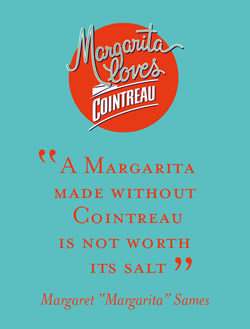
Cointreau has an international vision, but within that where do the geographic priorities lie?
China is a priority market today. We have our own Rémy-Cointreau distribution and have big ambitions. In China 99% of spirits consumed are local. Only 1% are imported and within that you need to push your brand and share and educate people well. It’s positive in China that we can speak about the orange and show our experience. For the past two years we have really pushed Cointreau in China and it has had success.
The wider Asia market is important but so too is Africa. We have a very good team there and within the next decade Africa will become a major market, helped in part by the close connections to France.
What factors will determine Cointreau’s ability to thrive in future?
One thing is clear: it will not be about volume for the sake of volume. We want to keep the quality so that means we run only one distillation per day. That is part of the recipe. We don’t want to fake our range.
We have a global vision but want to keep the focus on creativity through classic cocktails but also you can put those under the spotlight and re-examine the art of the mix. You can be creative while maintaining an authentic approach. We only have one distillery in Angers, the birthplace of the brand, but our archives are huge. If we want to take an old idea and make it new, we just go into the archives and refresh what is there. Having a family connection keeps that authenticity intact.
I am optimistic about the future. Cointreau has positive numbers, a positive strategy and we are in a group at Rémy-Cointreau that has a positive vision to have the best of every spirits category. We don’t have that today, but in rum, Cognac, whisky and liqueur we do have the very best. As a group we keep the authenticity of each of these brands through the original distilleries. That offers synergies and a great platform for the future.
https://www.youtube.com/watch?v=xAhazGOckz8
Into the modern world: Cointreau’s latest marketing campaign, launched in April around ‘The Art of the Mix’ (click on video to view)
Background: The Cointreau story
In 1849, the company’s first distillery was established on Rue Saint Laud, Angers, under the name Cointreau Frères, by brothers Edouard-Jean and Adolphe. Already in the confectionery and cake-making business, they saw a niche for naturally flavoured liqueurs.
Edouard, the son of Edouard-Jean, grew up at the distillery and reached adulthood with the ambition of becoming Master Distiller, which he did in 1870.
He noted consumers’ interest in the taste of oranges, which at the time were rare and precious. Having experimented in blending bitter and sweet orange peels, in 1875 he created the original Triple-Sec, known today as Cointreau.
From the early 20th century, the brand became popular among bartenders who prized its versatility. It can be found in mixology manuals dating back to the 1920s. During this period, Edouard’s sons, Louis and André, broke new ground for the brand, opening up the US market in particular, as the company began to fulfil its international ambitions.
On the company’s centenary in 1949, Pierre Cointreau, the fourth generation of the family, became CEO. That followed a year after Margaret Sames created a cocktail that blended Cointreau, tequila, known from then on as the margarita.
Today, Cointreau is one of the key brands in the Rémy-Cointreau Liqueurs & Spirits portfolio.




